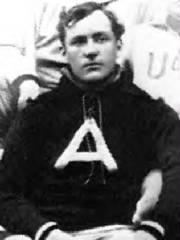1892 Alabama Cadets football team
The team was led by their head coach E. B. Beaumont and played their home games at Lakeview Park in Birmingham, Alabama.
After playing the game in 1891 while in attendance at a northern prep school, Little returned to Alabama where he helped establish the first team at the university for the 1892 season.
They then split a pair of games with the Birmingham Athletic Club, and closed out the season with a 32–22 loss in the first Iron Bowl against Auburn on February 22, 1893.
In what was the first ever game played by the University of Alabama, a team of Birmingham-area high school players lost to the Cadets 56–0 at Birmingham's Lakeview Park.
[12] The play utilized most throughout the game was a rushing formation developed by Harvard earlier in the season called the flying wedge.
In a game noted for numerous fumbles by both squads, Alabama scored first and took a 4–0 lead on a William G. Little touchdown run late in the first half.
[12] In the second half, both Robert Cope and Eli Abbott scored touchdowns and one G. H. Kyser extra point gave Alabama the 14–0 victory.
[14] Frank Savage then scored Alabama's first touchdown on a 10-yard run and William B. Bankhead converted a successful extra point to cut the Auburn lead to 8–6.
[12][14] Thomas Daniels then scored Auburn's final two touchdowns on runs of one and 25 yards and also converted both extra points to give them a 32–18 lead.
"[16] After Beaumont's departure, William G. Little continued the training of the team until Abbott was selected to serve as head coach for the 1893 season.

